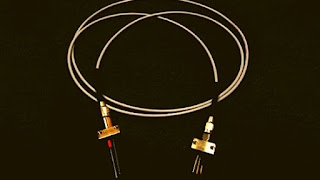A Beginner's Guide To Polymer Optical Fibre
What are Polymer Fibers?
Polymer Optical Fibres which is also known as Plastic Optical Fibres are optical fibers that are made
of polymer optical materials.
These fibers are the best for business, home, student housing, any kind of apartments, etc.
They are not as high performing as the glass fibers when it comes to data transmission capacity and
propagation losses. But, they are more powerful and allow for other cheaper fiber optic solution in
some application areas.
of polymer optical materials.
These fibers are the best for business, home, student housing, any kind of apartments, etc.
They are not as high performing as the glass fibers when it comes to data transmission capacity and
propagation losses. But, they are more powerful and allow for other cheaper fiber optic solution in
some application areas.
The Production of Polymer Fibers
Polymer Optical Fibers can be made from performs in a way similar to the Silica Fibers. The
temperature of the preform should be maintained low. The preform is made with a hollow tube of the
cladding material. This is filled with a liquid mixture of the monomer along with some reactive agents
for polymerization. A dopant is later applied to the inner surface of the tube and, then its diffused into
the material, and the tube is collapsed later. Two different polymer materials are fed into the extruder.
temperature of the preform should be maintained low. The preform is made with a hollow tube of the
cladding material. This is filled with a liquid mixture of the monomer along with some reactive agents
for polymerization. A dopant is later applied to the inner surface of the tube and, then its diffused into
the material, and the tube is collapsed later. Two different polymer materials are fed into the extruder.
Polymer Fibers Vs Glass Fibers
There are various factors that differentiate a glass fiber and a polymer fiber:
Many of the Polymer optical fibers have their loss minimum at visible wavelengths. But, silica fibers
or some other glasses have their loss minimum at much longer wavelengths.
The data transmission with Polymer Fibers is limited to much shorter distances.
POF are multimode fibers with large core and high numerical aperture. Thus, it can support a large
number of guided modes. They are not at all suitable for single guided modes.
POFs are highly strong and flexible. There is no need for any complex training for their multimode
guidance. They are highly cost saving for various applications.
POF cables are thinner and highly in lightweight when compared to the glass fiber cables.
or some other glasses have their loss minimum at much longer wavelengths.
number of guided modes. They are not at all suitable for single guided modes.
guidance. They are highly cost saving for various applications.
Benefits of Polymer Optical Fiber
- Low cost than copper and glass fibers
- Low installation labor cost
- Low-power optical POF switch
- Need only less infrastructure support from up-stream high-speed switches and routers
- Cost effective due to lesser physical ports
- 50% less power needed to operate compared to copper
- 80% reduction of carbon dioxide than coppe
- Data transfer is secure, robust & reliable
- No interference from unwanted signals
- No electromagnetic interference
- Lightweight, robust, and highly durable
- Waterproof, moisture-proof, & magnetic-free
- LEED-certified
Characteristics of POF
It is difficult to bend
Easy installation
Suitable for short distance transmission
It can resist vibration & bending
They transmit very little infrared light
Applications of POF
POF is divided into four major categories:
- Lighting
- Communications
- Sensor
- Automobiles
To conclude, Polymer Optical Fibers are very much cost effective and are ideal for various applications that need flexibility.
- Lighting
- Communications
- Sensor
- Automobiles

Comments
Post a Comment